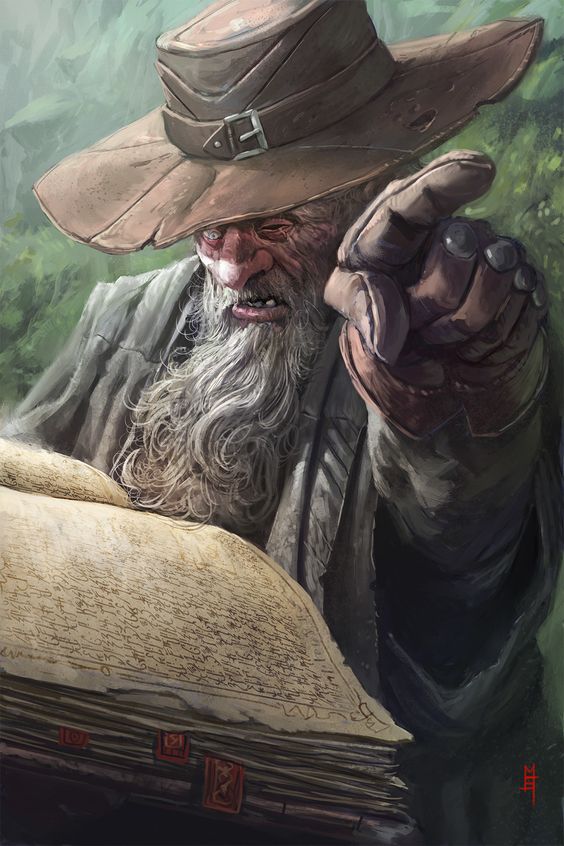Aging and Life Cycles
Tairos is home to many different sentient species, most of which still have pockets of thriving civilization. While many factors contribute to the success or failure of a people, one that warrants a certain amount of attention is the rate of aging and maturity each possesses.
It's no secret that people like the elves and dwarves owe much of their prosperity to the fact that their natural lives can span half a millennia or more. These longer lives have afforded advantages in building wealth, accumulating skills, and developing magic that shorter lived species struggle to compete with. Many anthropologists have speculated that this immense descrepency in longevity is why the elven civilization was the first to take root in Tairos. Being able to have experts in any given field share their craft for centuries directly rather than rely on passed-down knowledge was perhaps the great advantage their lifespans offered. Also, having warriors with combat experience earned from ages served on the battlefield meant that expanding and holding borders becomes easier. For the rare few scholars aware of The Empire of Skyrir actually being the first civilization to rise in Tairos, this idea of longer life being a boon to the development of nation is further reinforced.
While the upper limit of each species' lifespan can vary, most of the sentient people of Tairos tend to mature at the same or similar rate. In practice, this means that an elven adolescents and a human one will both have matured to the same point roughly in tandem with each other. Anthropologists speculate that this is an evolutionary necessity. For example, if an elven baby remained a helpless toddler for decades on end it would only become more and more likely that the child would perish before reaching adulthood and possible take its guardians along with it. As each species faces the same natural threats during their early development it makes sense that the rate in which they mature would look similar.
Where these rates start to differ is in adolescence and beyond. Elves and Dwarves for example will see their rate of aging slow considerably after becoming physically mature. These rates of aging and the impact of aging are where the differences between species become very diverse. Elves have a gradual slowly of their rate of aging until decades of time will need to pass before they age the equivalent of what a human will see in a single year. While their aging is slowed the physical decline that age brings with it is similar to that of humanity. A very old human and a very old elf will have similar infirmities. Contrast this with dwarves whom have shorter life spans than elves but their physical state rarely decays much beyond a few achy joints and greying hair.
A notable exception to these aging norms is the Tengu. In addition hatching from eggs, perhaps the biggest difference, Tengu quickly become mentally self-sufficient even though their bodies mature at rates similar to humans. This means a toddler sized Tengu will have the mental faculties of human adolescent. This is likely a byproduct of the close-knit social nature of Tengu. This has led to a higher mortality rate for Tengu youth as well. Parents are less inclined to closely watch over their children and these children are often likely to take on challenges that they're physically not ready for.
Manifestation
Aging impacts each species differently and at different times. In most cases aging comes with physical limitations and degradation. Dwarves seem the most resistant to these changes while Tengu the most susceptible. Seeing an old Tengu is a very rare thing indeed.
Each species is more prone to certain age-related conditions than others as well. Dwarves, while largely resistant to the effects of aging will often experience painful calcification in certain joints and spinal aches due to a lifetime of bearing their broad musculature. Elves on the other hand will see similar age-related impediments as humans but one unique malady is a fading connection to magic. Spells will gradually fail or spiral out of control, learning new magic will become difficult, and spell-like abilities will cease to function. While none of the Gnomes alive today are near their twilight years, texts from before the Rebuke do clearly detail that older gnomes are prone to mental withering and madness. Halflings on the other hand share much in common with humans, as they always have, including their age-related decline. However, there is a common sentiment that is largely without scientific backing, that the older a Halfling gets the more inclined they are to be a sour curmudgeon. If true, a general decline in mood and perspective is what older Halflings have in store for themselves. Halflings do excel at creating dishes that are packed with nutrients and specially prepared with elderly in mind. This has led to them having some of the healthiest elderly populations in Tairos.
Localization
While nowhere is safe from the touch of time's withering grasp there are said to be places further from it's reach than others. One such location that is widely known is Melanthris. The elves of this city tend to age even slower once they've reached maturity than even the rest of their kin. It's unknown if this is unique to just the elves there or if other species would receive a similar benefit (as non-elves are rarely allowed to stay in the city for very long).
There are stories of places in the deep of the Rylan Woods that time is said to flow different. Tribal people have spoken of such places for ages yet no verifiable data exists.
Halflings stories exist about certain fruit trees, spring water, and esoteric spice blends that are capable of warding off the march of years. Numerous chefs have laid claim to crafting such recipes but whether their effects are factual or just hype is unknown.
Type
Natural


Comments